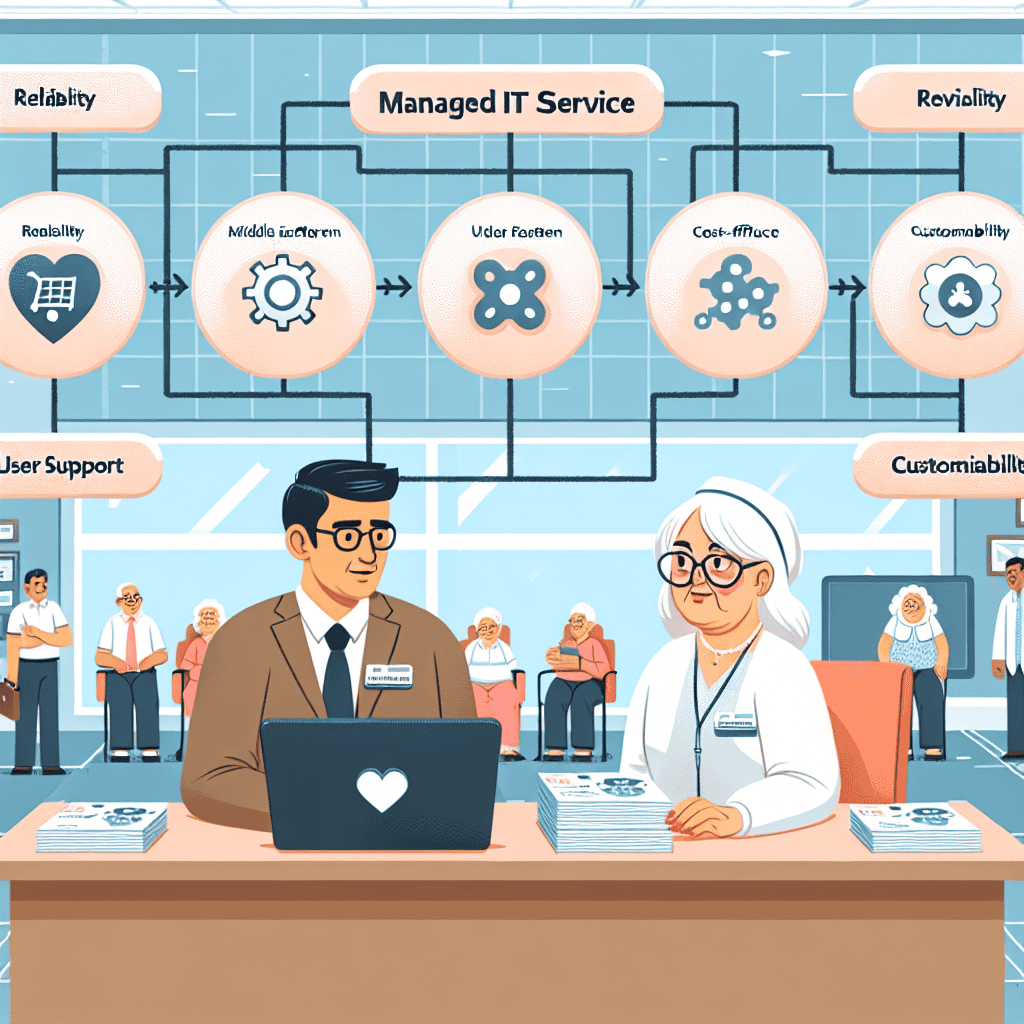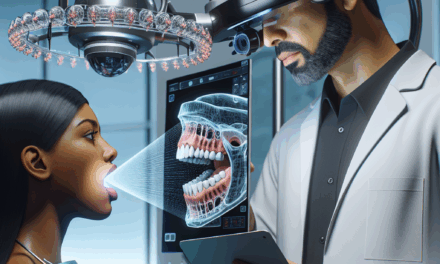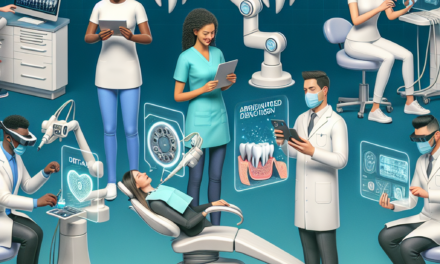Selecting the Right Managed IT Service for Elderly Care Facilities

In the rapidly evolving landscape of healthcare, elderly care facilities face unique challenges that require specialized solutions. One of the most critical aspects of modernizing these facilities is the integration of managed IT services. These services not only streamline operations but also enhance the quality of care provided to residents. However, selecting the right managed IT service can be a daunting task, given the myriad of options available. This article delves into the essential considerations and strategies for choosing the most suitable managed IT service for elderly care facilities.
Understanding the Needs of Elderly Care Facilities
Before diving into the selection process, it is crucial to understand the specific needs of elderly care facilities. These needs are often distinct from those of other healthcare providers due to the unique demographic they serve. Elderly care facilities must prioritize patient safety, data security, and efficient communication systems.
Patient Safety and Monitoring
One of the primary concerns in elderly care is ensuring the safety and well-being of residents. Managed IT services can play a pivotal role in enhancing patient safety through advanced monitoring systems. These systems can include fall detection sensors, vital signs monitoring, and emergency alert systems.
For instance, facilities can implement wearable devices that track residents’ movements and alert staff in case of a fall. According to a study by the National Institute on Aging, falls are the leading cause of injury among older adults, making such technology indispensable.
- Wearable health monitors
- Automated alert systems
- Remote patient monitoring
By integrating these technologies, facilities can significantly reduce response times and improve overall patient outcomes.
Data Security and Compliance
Data security is another critical aspect that elderly care facilities must address. With the increasing digitization of health records, protecting sensitive patient information is paramount. Managed IT services can offer robust security solutions that ensure compliance with regulations such as the Health Insurance Portability and Accountability Act (HIPAA).
Facilities must implement encryption, access controls, and regular security audits to safeguard data. A report by the Ponemon Institute highlights that healthcare data breaches cost an average of $7.13 million per incident, underscoring the importance of investing in strong security measures.
- Data encryption
- Access control systems
- Regular security audits
By prioritizing data security, facilities can protect themselves from costly breaches and maintain the trust of residents and their families.
Efficient Communication Systems
Effective communication is vital in elderly care settings, where timely information exchange can be a matter of life and death. Managed IT services can enhance communication through integrated systems that connect staff, residents, and family members.
For example, implementing a unified communication platform can streamline interactions between caregivers and medical professionals, ensuring that critical information is shared promptly. A study by the Journal of Medical Internet Research found that improved communication systems can lead to a 30% reduction in medical errors.
- Unified communication platforms
- Real-time messaging systems
- Family engagement tools
By investing in robust communication solutions, facilities can improve care coordination and enhance the overall experience for residents and their families.
Evaluating Managed IT Service Providers
Once the specific needs of the facility are identified, the next step is to evaluate potential managed IT service providers. This process involves assessing their expertise, service offerings, and track record in the healthcare sector.
Expertise in Healthcare IT
When selecting a managed IT service provider, it is essential to choose one with a proven track record in the healthcare industry. Providers with healthcare expertise understand the unique challenges and regulatory requirements that elderly care facilities face.
For instance, a provider with experience in implementing electronic health records (EHR) systems can offer valuable insights and solutions tailored to the facility’s needs. According to a survey by Black Book Market Research, 93% of healthcare providers believe that IT vendors with industry-specific expertise deliver better value.
- Experience with EHR systems
- Knowledge of healthcare regulations
- Proven track record in elderly care
By partnering with a provider that understands the healthcare landscape, facilities can ensure a smoother implementation process and better outcomes.
Comprehensive Service Offerings
Another critical factor to consider is the range of services offered by the provider. A comprehensive managed IT service should cover all aspects of the facility’s IT needs, from infrastructure management to cybersecurity and data analytics.
For example, a provider that offers 24/7 technical support, regular system updates, and proactive monitoring can help prevent downtime and ensure seamless operations. A report by Gartner highlights that organizations with comprehensive IT support experience 50% fewer system outages.
- 24/7 technical support
- Proactive system monitoring
- Regular software updates
By choosing a provider with a wide range of services, facilities can address all their IT needs under one roof, simplifying management and reducing costs.
Reputation and Client Testimonials
The reputation of a managed IT service provider is a strong indicator of their reliability and quality of service. Facilities should research potential providers by reading client testimonials, case studies, and online reviews.
For instance, a provider with positive feedback from other elderly care facilities is likely to deliver satisfactory results. A study by BrightLocal found that 87% of consumers trust online reviews as much as personal recommendations.
- Client testimonials
- Case studies
- Online reviews
By considering the experiences of other clients, facilities can make informed decisions and select a provider that aligns with their expectations.
Implementing Managed IT Services in Elderly Care Facilities
After selecting a suitable managed IT service provider, the next step is to implement the services effectively. This process involves careful planning, staff training, and ongoing evaluation to ensure successful integration.
Planning and Preparation
Effective implementation begins with thorough planning and preparation. Facilities should work closely with the provider to develop a detailed implementation plan that outlines timelines, responsibilities, and key milestones.
For example, a phased approach can be beneficial, allowing the facility to gradually integrate new systems while minimizing disruptions. A report by McKinsey & Company suggests that organizations with well-defined implementation plans are 30% more likely to achieve their project goals.
- Detailed implementation plan
- Phased integration approach
- Clear timelines and responsibilities
By investing time in planning, facilities can ensure a smoother transition and maximize the benefits of the new IT systems.
Staff Training and Support
Staff training is a critical component of successful implementation. Facilities must ensure that all staff members are adequately trained to use the new systems and understand their benefits.
For instance, providing hands-on training sessions and access to online resources can help staff become proficient in using the new technology. A study by the American Society for Training and Development found that organizations with comprehensive training programs experience 218% higher income per employee.
- Hands-on training sessions
- Access to online resources
- Ongoing support and assistance
By prioritizing staff training, facilities can enhance user adoption and ensure that the new systems are used effectively.
Ongoing Evaluation and Improvement
Once the managed IT services are implemented, facilities must continuously evaluate their performance and seek opportunities for improvement. Regular assessments can help identify areas for optimization and ensure that the systems continue to meet the facility’s needs.
For example, conducting regular feedback sessions with staff and residents can provide valuable insights into the effectiveness of the new systems. A report by Deloitte highlights that organizations that prioritize continuous improvement achieve 20% higher customer satisfaction rates.
- Regular performance assessments
- Feedback sessions with staff and residents
- Continuous improvement initiatives
By fostering a culture of continuous improvement, facilities can maximize the benefits of their managed IT services and enhance the quality of care provided to residents.
Case Studies: Successful Implementation of Managed IT Services
To illustrate the benefits of managed IT services in elderly care facilities, let’s explore some real-world case studies that highlight successful implementations and their impact on patient care.
Case Study 1: Enhancing Patient Safety with Advanced Monitoring Systems
One elderly care facility in Florida implemented a comprehensive managed IT service that included advanced patient monitoring systems. The facility integrated wearable devices that tracked residents’ movements and vital signs, providing real-time data to caregivers.
As a result, the facility reported a 40% reduction in fall-related incidents and a 25% improvement in response times. The success of this implementation was attributed to the facility’s commitment to staff training and continuous evaluation of the system’s performance.
- 40% reduction in fall-related incidents
- 25% improvement in response times
- Commitment to staff training and evaluation
This case study demonstrates the potential of managed IT services to enhance patient safety and improve overall care quality.
Case Study 2: Improving Communication and Coordination
Another facility in California implemented a unified communication platform as part of their managed IT service. The platform connected caregivers, medical professionals, and family members, enabling seamless information exchange.
The facility reported a 30% reduction in medical errors and a 20% increase in family engagement. The success of this implementation was attributed to the facility’s focus on staff training and the use of feedback to continuously improve the system.
- 30% reduction in medical errors
- 20% increase in family engagement
- Focus on staff training and feedback
This case study highlights the importance of effective communication systems in enhancing care coordination and improving patient outcomes.
Conclusion: Key Takeaways for Selecting Managed IT Services
In conclusion, selecting the right managed IT service for elderly care facilities is a critical decision that can significantly impact patient care and operational efficiency. By understanding the unique needs of elderly care facilities, evaluating potential providers, and implementing services effectively, facilities can enhance patient safety, improve communication, and ensure data security.
Key takeaways from this article include:
- Prioritizing patient safety through advanced monitoring systems
- Ensuring data security and compliance with robust solutions
- Enhancing communication with integrated systems
- Choosing providers with healthcare expertise and comprehensive service offerings
- Focusing on staff training and continuous improvement
By following these guidelines, elderly care facilities can select the right managed IT service that aligns with their goals and enhances the quality of care provided to residents.




